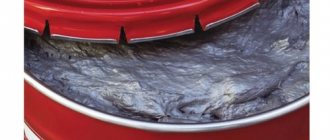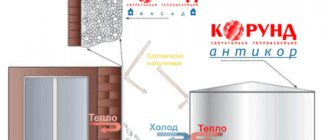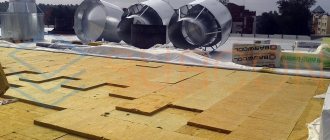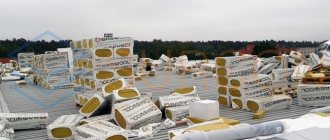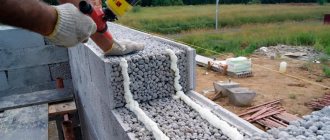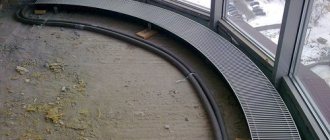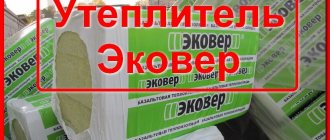When choosing the most effective material to reduce heat loss from buildings and pipelines, many prefer to use a liquid thermal insulating ceramic coating. This composition is applied directly to the surface that needs to be protected from loss of thermal energy, and provides fairly effective protection, especially when used in combination with other insulation materials.
A thin layer of liquid ceramics is sometimes more effective than a thick layer of insulation
Liquid thermal insulation: where is it used and what properties does it have?
When you see liquid insulation, you get the impression that you have to deal with ordinary paint. In fact, the coating has significant differences from paint and a number of special properties and characteristics. Firstly, the material exhibits excellent adhesive properties, which allows it to contact any type of surface equally successfully.
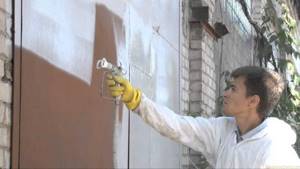
Secondly, liquid ceramic thermal insulation material copes with protecting treated surfaces from mold, rust, condensation, and all this despite the fact that it can be applied to materials at high or, conversely, low temperatures. The heat insulator again gains resistance to corrosion, fungus and moisture due to its special composition and vacuum in the microcavities.
The use of liquid insulation is effective in any situation, regardless of the type of surface being treated. With equal success, the liquid ceramic layer can be applied:
- on the surface of wooden walls;
- on metal pipes;
- on metal-ceramic roofing;
- on concrete structures, etc.
In each of the options, the thermal insulation layer will not only retain heat in winter, guaranteeing coolness in summer, but will also prevent the formation of increased moisture on surfaces.
Today, many manufacturers are working on the development of liquid insulation materials, including those on the domestic market. There are several options of noteworthy brands available, in turn presented in various modifications to solve certain problems.
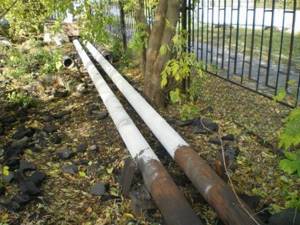
Scope of application of heat-insulating paints
This product group cannot be used as facade insulation. One example:

Seams painted with liquid ceramic paint after the heating season
What liquid insulation with ceramic balls is really capable of:
- Good solar reflection (any glossy white paint will do this well)
- Protecting boiler house workers from accidental burns on pipes (the so-called “Toilet paper effect”).
The video below discusses this effect in detail.
Sellers often cite thermograms from thermal imagers as evidence - photos of painted sections of the facade, in which the paint looks like a blue patch against the background of uninsulated parts of the wall. I found a very interesting example of how a thermal imager reacts to colors:

A forum member from Forumhouse painted the wall of his house with beige and white water-based emulsion. I pasted on a couple of pieces of black electrical tape.

White, beige and black colors.
How does a thermal imager see colors?
Liquid insulation TC Ceramic: features
The products of this brand are sold in the form of a suspension containing acrylic polymers, synthetic rubber and various pigments. Additionally, the composition includes ceramic microcavities and silicone spheres. The material is applied to different types of surfaces:
- brickwork;
- glass;
- plastic;
- metal;
- tree, etc.
The application method is similar to the method of treating surfaces with paint - use a roller, brush or spray.
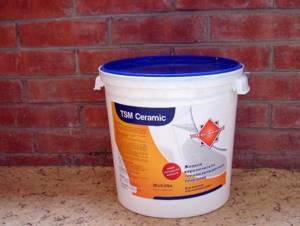
According to the manufacturer, when treating external surfaces, the coating retains its performance properties for 10 years, while when creating a thermal insulation layer indoors, this period increases by 2.5 times.
The material can be used to insulate both horizontal surfaces (floor, ceiling) and vertical surfaces (roof, walls, facade, etc.). The material will protect against temperature fluctuations, UV rays and moisture.
RE-THERM products: what they are and how they work
To create a reliable thermal insulation layer, products from the RE-THERM company are suitable. The manufacturer claims the material’s ability to protect surfaces of any type, including those with non-standard relief solutions. RE-THERM thermal insulation is fireproof, does not contain chemically hazardous substances, is a completely environmentally friendly material, but most importantly, it exhibits the ability to have low thermal conductivity.
Insulation insulation is available for purchase in the form of a suspension in several modifications to solve different types of problems:
- Standard;
- Fire retardant;
- Inhibitor;
- Ruber;
- Antifreeze;
- Vertical.
The standard is suitable for any type of surface and is used to insulate walls inside and outside the house. The fire retardant was developed for rooms and structures with a risk of fire and is resistant to fire. The inhibitor is positioned by the manufacturer as a material for insulating metal surfaces that prevents the formation of rust.
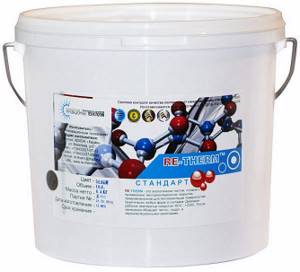
In transport, as well as in systems with a risk of vibration, it is advisable to use liquid insulation of the Ruber brand with increased elasticity. But for insulating surfaces exposed to low temperatures, Antifreeze thermal insulation, which can withstand temperatures down to −40 degrees, is suitable.
To insulate vertical surfaces, preventing material from flowing down, the manufacturer has developed a special version of thermal insulation with increased viscosity called Vertical.
Step by step guide
The surface on which liquid thermal insulation will be applied must be thoroughly cleaned of dust, dirt and rust. Metal elements of building structures should be degreased. Note that different types of insulation, due to the characteristics of their composition and structure, differ in their areas of application, as well as installation methods. Let's briefly look at the technology and nuances of their installation.
Liquid ceramic insulation for walls, pipelines and roofs contains acrylic varnish or water as a binder, so it is better to use it in the warm season at a temperature not lower than +7 °C.
1. First you need to prepare the floor, level and sand its surface, and seal all cracks or seams.
2. Liquid thermal insulation is sold in cylinders or cans, it is already completely ready for use, and is applied with a brush or roller. Some varieties have increased fluidity and can be sprayed onto walls with a spray gun.
3. In order to ensure maximum effect when insulating thin walls and partitions, it is necessary to lay in several layers 0.5–1 mm thick, allowing each coating to dry for at least 10 hours.
4. During application, liquid ceramic insulation must be thoroughly mixed every 15–20 minutes to avoid delamination of the structure of the composition.
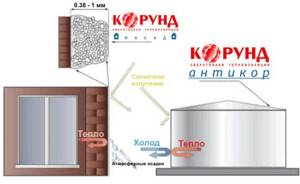
The technology for using penoizol also has some features. Most often, this material is used as “fill-in” thermal insulation between internal and external brickwork or cladding of a frame structure. If necessary, it can be applied to vertical surfaces, having previously cleaned them of dirt and installed the formwork.
- Penoizol increases in volume when applied under pressure. Cylinders with the finished mixture are marked with the calculation of the amount of content per coverage area.
- The thermal insulation composition must be prepared in strict accordance with the instructions. It is necessary to correctly calculate the amount of starting material in order to obtain a mixture of the desired consistency.
- Liquid foam can be prepared directly on the construction site. This feature, along with high strength, allows it to be used in the construction of multi-story buildings.
Penoizol can be used in the widest temperature range by simply applying it to the surface and leaving it until completely dry.
Teplomett thermal insulation - easy to apply and convenient to use
Another noteworthy material for insulating surfaces according to a modern scheme is Teplomett products. Just as in previous cases, the insulation is characterized by excellent heat and moisture protection properties, durability, and the ability to interact with surfaces of any type.
Teplomett thermal insulation is resistant to temperature fluctuations, mechanical damage, and does not contain harmful substances.
Insulation with the material does not require the use of an additional protective layer due to its ability to not allow moisture to pass through. An additional bonus is the color pigments included in the composition, which allow you to create a coating with an aesthetic appearance. The material can be applied using one of the standard methods: brush, roller or spray.
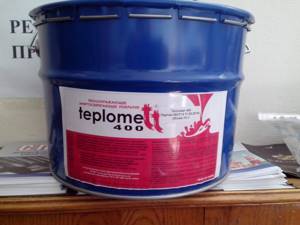
What is it made from, what technical characteristics does it have?
Liquid thermal insulation is an innovative material with very high thermal insulation performance. This is a composite coating made of polymers containing hollow ceramic microspheres.
Insulation composition
The structure of this substance is as follows:
- The base is a binder - a mixture of water and acrylic. Designed to promote uniform distribution over the surface and enhance the adhesive properties of surfaces.
- The filler is ceramic granules, microscopic in size, which are filled with gas. Thanks to their presence, thermal insulation increases significantly.
- Additional components - rubber, silicone and other components with properties that improve the water resistance and elasticity of the coating.
Insulating this insulation in combination with other types increases their ability to retain heat.
After application and complete polymerization, the specific gravity of the voids is scattered - 75-80%.
Molecular structure of liquid pipe insulation
Specifications
The indicators of this parameter are given in tabular form:
Alfatek - liquid insulation for years
It is for many years to come that the manufacturer proposes to insulate surfaces with Alfatek liquid insulation. Just like its analogues, the material consists of many components, including foam glass and acrylic. Thermal insulation in this form is completely safe, does not contain harmful volatile compounds, is resistant to open flames, and does not lose its basic functionality at temperatures from −60 to +260 degrees Celsius.
According to the manufacturer, the service life of Alfatek liquid insulation is up to 20 years. It is used to protect communication systems, residential and industrial buildings from cold (walls, ceilings, roofs and floors are insulated), air conditioning systems, pipelines, etc.

Areas of use
In all countries of the world, liquid thermal insulation has long been used to strengthen bridges and massive metal structures for other purposes. This innovative coating is also used in insulation processing:
- pipelines of various purposes and diameters in industrial and residential buildings;
- pipelines for transporting substances that are too cold, explosive or too hot;
- oil and gas pipelines;
- air ducts of air conditioning systems;
- in facades, slopes, roofing and other architectural elements;
- shut-off valves located in laboratory, medical, furnace institutions.
Moreover, having the ability to firmly adhere to surfaces, it can also be used in the insulation of concrete, brick and polymer structures.

Places and industries where liquid pipe insulation is used
Thermal insulation Isollat - special insulation of a new generation
The material was developed in Yekaterinburg and has occupied a strong position in the market for more than 10 years. The manufacturer recommends using thermal insulation within the temperature range from −60 to +500 degrees Celsius, with the possibility of increasing the extreme mark to +600 degrees in critical situations. It is precisely this wide range of temperatures permissible for operation that distinguishes the insulation from its analogues.
The color of thermal insulation in the basic version is white; at the buyer’s request, color pigments of any shade can be added to the composition.
The composition includes hollow ceramic capsules with rarefied air, due to which it is possible to take the effectiveness of the material to a new level.
Thermal insulation is available in six options:
- Izollat-01 is suitable for insulating walls and roofs, both inside and outside, including in buildings with many years of service.
- Isollat-02 is the base material for insulating surfaces for use in temperatures ranging from −60 to +170 degrees.
- Isollat-03 - contains fire retardant additives that prevent ignition.
- Isollat-04 is the only one in the whole world capable of withstanding temperatures up to +500 degrees and up to +600 degrees at critical moments. Suitable as insulation for industrial equipment.
- Isollat-05 - suitable for insulating metal surfaces susceptible to corrosion. Can be used at temperatures up to +160 degrees with additional treatment with silicone varnish.
- Isollat-nano - used for insulation of external walls, has the ability to self-clean.
The latter option is rarely available on store shelves, as it is offered to the buyer on order.
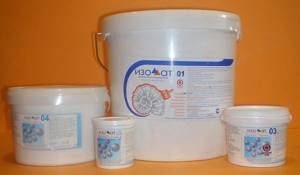
Liquid insulation Corundum - performance characteristics
The production of ultra-thin insulation Corundum is carried out by NPO Fulleren LLC. In the domestic market, products under this brand are in particular demand, primarily due to the proliferation of dealership centers.
Thermal insulation suspension is suitable for insulating facades, roofs, walls, pipelines, tanks and other objects, systems and structures. The material is available in several versions:
- Classic - for finishing surfaces of any type with intended use in the temperature range from −60 to +200 degrees Celsius (a critical increase in temperature up to +260 degrees is possible).
- Anticorrosive - just like its analogues, it is used to insulate and protect surfaces from corrosion, and exhibits increased resistance to UV rays and chemicals.
- Winter - coating for finishing surfaces at sub-zero temperatures down to −20 degrees. The composition includes foam glass granules. Samples available for testing.
- Facade - insulation for finishing concrete external surfaces.
The cost of the material depends on the brand and purpose; the material is applied in the usual way: with a roller, brush or spray.

Akterm - operating principle and line of ultra-thin thermal insulation
The products are manufactured at a plant in the Moscow region and are positioned by the manufacturer as a material that can withstand operation in temperatures ranging from −60 to +250 degrees, and in the case of using a special brand - up to +600 degrees. The line of insulation includes the following modifications:
- Standard - liquid thermal insulation for insulating base surfaces, including those made of concrete and metal, when operating in conditions from −60 to +260 degrees.
- Facade is a specially developed insulation material for thermal insulation of external walls made of concrete and wood.
- Nord - the versatility of the insulation lies in the possibility of application on surfaces at sub-zero temperatures down to −30 degrees.
- Anticorrosive is a special heat insulator for surfaces at risk of rust.
- Non-flammable - suitable for installing an ultra-thin heat-insulating layer that is resistant to fire.
- Anti-condensation - designed for insulation of surfaces with an increased level of condensation.
- Vulcan is a material for thermal insulation of objects whose operating temperature exceeds the norm and is equal to +600 degrees Celsius.
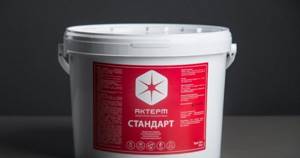
The listed brands of insulation in the form of a suspension are most widely used on the Russian market. In addition to them, European-made materials are also available, the cost of which is higher due to transport costs and brand name, but not due to any special performance characteristics.
Flaws
It is worth noting that not every thermal insulator can be applied without special equipment. Thus, it is necessary to hire craftsmen with the necessary equipment and work skills.
Disadvantages include:
- with a strong decrease in temperature, slopes treated with the mixture may freeze - this only happens if the technology was violated during application;
- Each type of product must be used strictly for its intended purpose. They are classified according to places of application;
- If you overdo it with dilution with water, the thermal insulation will not fit well and will drain.
